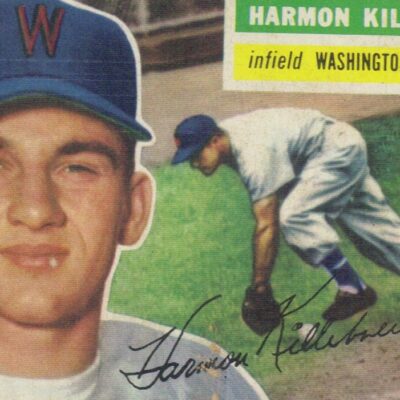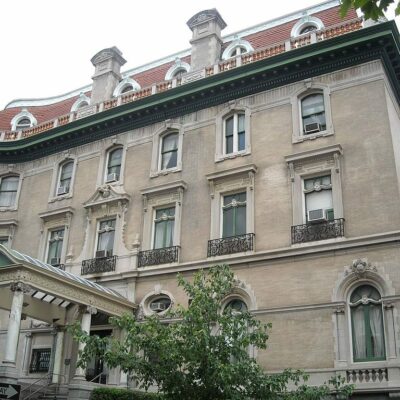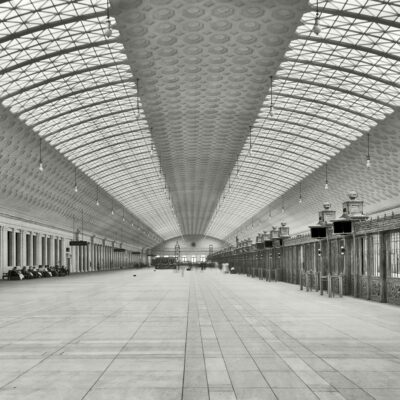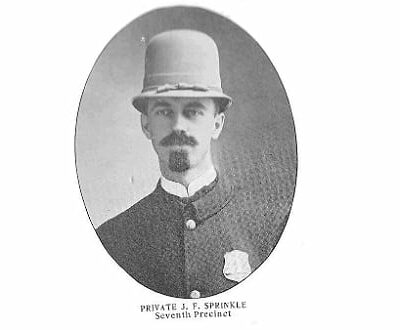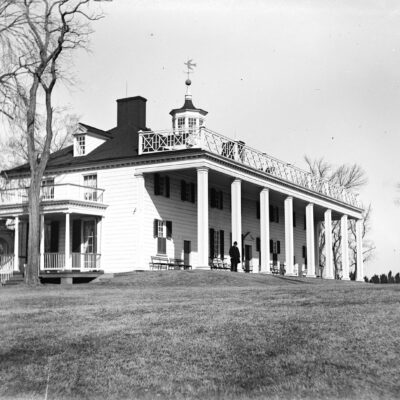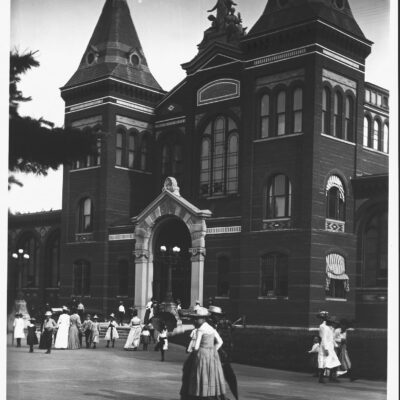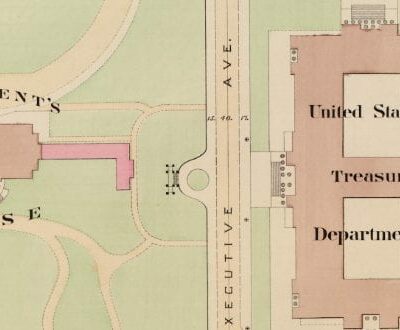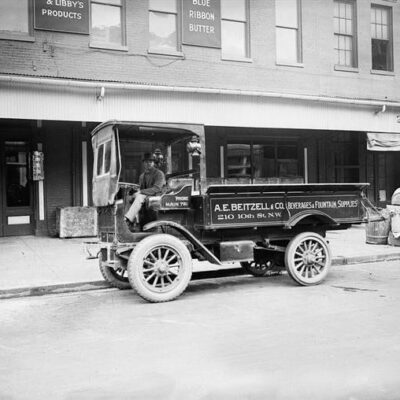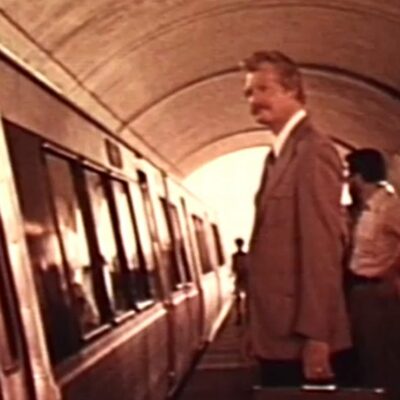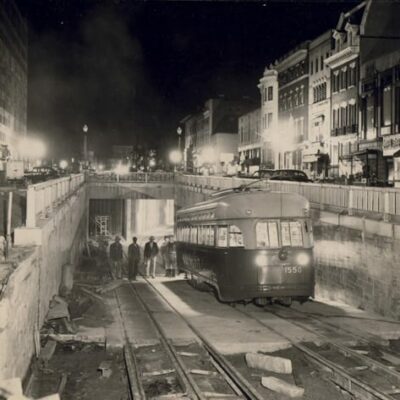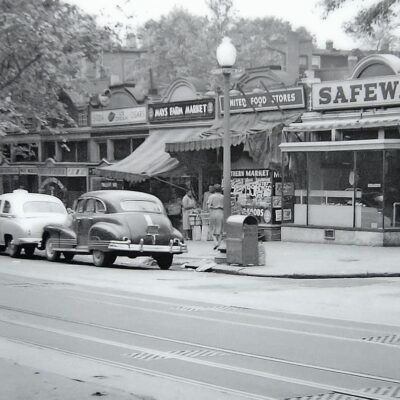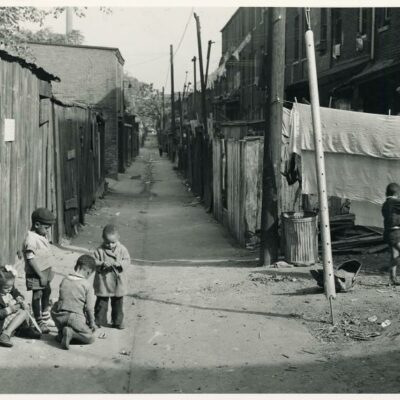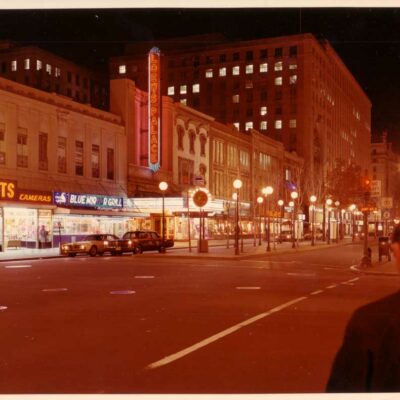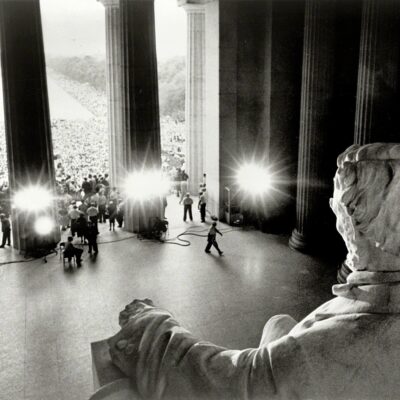I came across an article in the Washington Times about three giants of the Washington police force … and I mean real “giants,” as in super tall cops. Well, super tall by standards back in 1903, not Gheorghe Muresan.
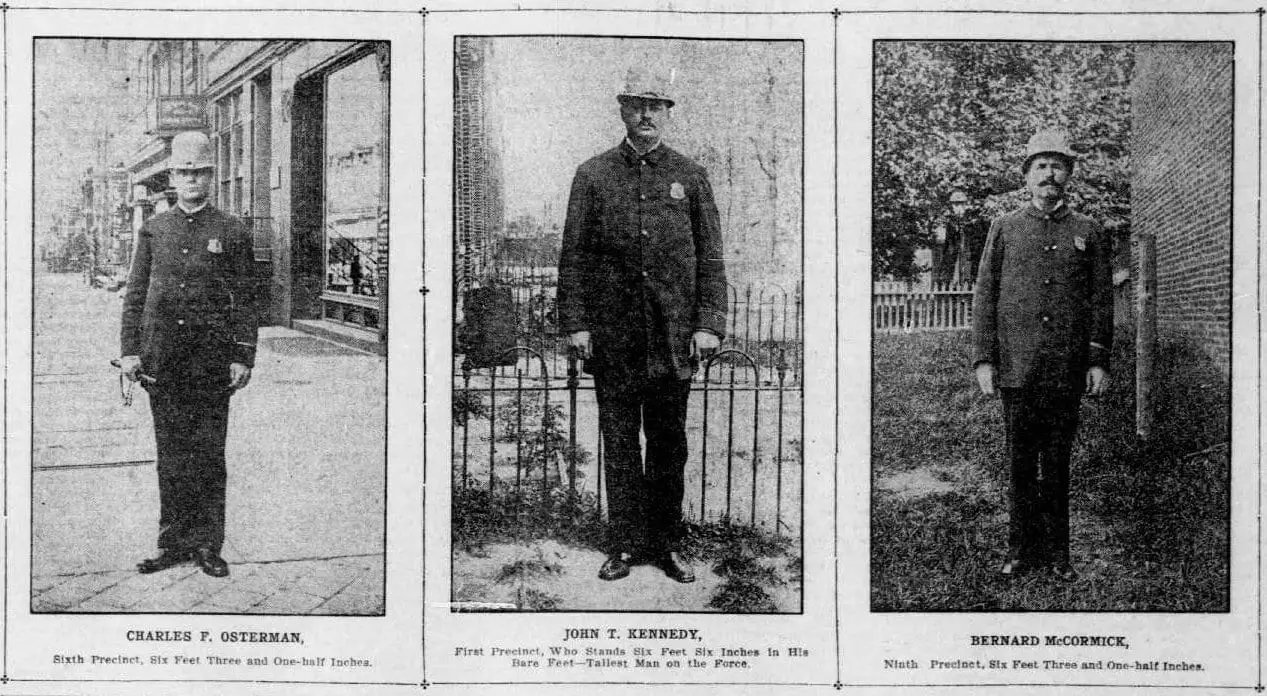
Though these men do not eclipse GoDC favorite, Officer Sprinkle, our next “Three Things…” post will highlight these 20th century “giants.” Charles F. Osterman, John T. Kennedy and Bernard McCormick were featured in this article from Sunday, September 13th, 1903.
Among Washington’s “finest” are found several big men, four of whom are specially noted for their great height and weight. They are giants as compared with an ordinary man, and are among the most striking figures, physically speaking, to be found at the National Capital.
Big men gravitate to the police departments of the country. In all the cities are to be found a squad of tall fellows who look fine in the coats of blue and high helmets constituting the regulation dress. In fact the whole body of the police, especially in Washington, are men above the average height and weight.
1. Charles F. Osterman is a big fellow
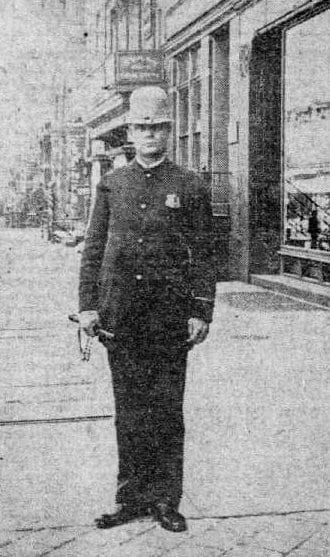
Officer Osterman (great name) was of German decent, having been born into the German immigrant community in Cincinnati.
Charles F. Osterman is a big fellow in the Sixth precinct, who measures 6 feet 3 1/2 inches in his stockings, and weighs 238 pounds. He was born thirty-two years ago in Mount Adams, a suburb of Cincinnati, and for many years had no thought of becoming a policeman. the family came to Washington when he was nearly through his “teens,” and Osterman and his father engaged for some time in the dairy business. Not finding it so profitable as they had hoped, the young man became an apprentice and learned the carpenter’s trade. While working in a house one day the chance remark of a friend led him to think of joining the police force. He made an investigation, found out that he was eligible, and, because the position offered a steady salary, decided to don the blue coat and helmet. He joined the force July 1, 1897. he was first assigned to No. 5 precinct, where he remained five and one-half years. In this time his beat was about the navy yard and the streets leading thereto. In the course of his five years’ service there he learned to know most of the marines, and in cases of desertion he was frequently called upon to aid other policemen in identifying them. In this way he has added considerable to his finances from his share of the rewards offered. Osterman served under Lieutenants McCathran and Gessford, and was from the start a utility man who could be trusted to execute special orders for his superior.
The big man Osterman was still living with his family at the time of the 1900 U.S. Census. It was a large household of seven, with parents Herman and Anna overseeing five sons, with Charles being the only one listed as being born outside of the District. They were living at 161 Maple Ave.

2. John T. Kennedy is the giant of them all

The tallest of them all was John T. Kennedy, so tall in fact, that he was entered into a national contest for largest police officer in the country.
John T. Kennedy is the giant of them all. A year or two ago a contest was arranged by the chiefs of police of the various cities and a prize offered to the tallest policeman in the United States. Kennedy was photographed for this contest and was the competitor for Washington. In helmet and shoes he measured six feet nine and one-third inches, and tipped the scale at 285 pounds. He was third in the list when the returns were all in.
One curious fact regarding Kennedy is that he grew three inches in height after he joined the force. He was appointed July 1, 1893, when he was twenty-two years old. Within four years he actually grew three inches. His official height the the time of appointment in his bare feet was six feet three inches, and his measure taken several times since has been invariably six feet six inches. His weight at twenty-two was 197 pounds, and he has been gradually creeping up until he now registers 265.
Kennedy is a striklingly [sic] handsome man. He came from the “Green Hills of Virginia,” and is one of the fairest of the sons of the Old Dominion. His face is round and smooth as a boy’s and he generally wears a pleasant smile. So far as looks indicate the burden of life rest lightly upon him, and the duty of the policeman is a mere pastime. Kennedy is a good talker and has a fund of pleasant anecdotes with which to while away a leisure hour.
Kennedy lived with his wife of five years, Belle and young son Frank at 1812 8th St. NW (now conveniently located right next to the Shaw metro station).

3. Bernard McCormick, the terror of evildoers
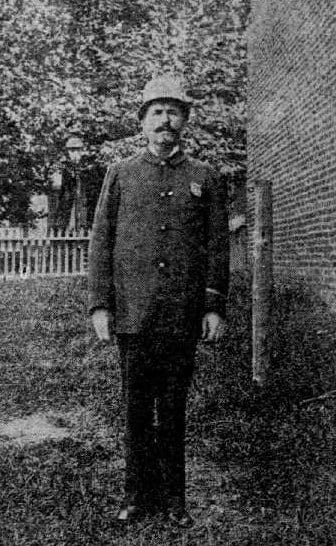
The last officer mentioned was Bernard McCormick, one of the men responsible for policing H St. NE, keeping it free of scoundrels and ruffians. I suspect he was either on the scene (or at least aware) of the great bicycle accident of 1896.
One of the most striking characters of the Metropolitan police force is big Bernard McCormick, of the Ninth precinct, the pride of the Northeast section, and the terror or evildoers at Chesapeake Junction. McCormick is older in point of service than those described, and boasts of having broken the most of the younger men of the old Eighth precinct into the business. He joined the force in 1890, at which time he was 5 feet 3 1/2 inches in height, and “kicked the beam” at 218 1/2 pounds. Since then Bernard’s girth has expanded a little and he now weights 285 pounds. McCormick had the grip two years ago followed by pneumonia and he came out of his illness with the asthma and otherwise somewhat broken in health. He is, however, on the active list and works his beat every night at Chesapeake Junction. Within one year, since he was assigned to it, the big fellow has succeeded in establishing comparatively good order in that resort of notorious wickedness. His own way of expressing it is that he “holds them down.” Of course, there are many arrests, and “Mae,” as he is familiarly called, has a tussle now and then with some hard-headed rioter, but he brings them in to Fifteenth and H Streets northeast, where the patrol wagon is awaiting him, and the prisoners who make a fuss usually receive additional penalty upon McCormick’s testimony in court.
In the 1900 U.S. Census, Officer McCormick lived at 616 10th St. NE with his wife of 11 years, Ellen, two daughters, Katherine and Margaret, plus their oldest child, a son, Thomas. Interestingly, their oldest was born in Idaho in 1890, which happens to be the same year the newspaper reported he joined the police force. So, either the Times is wrong, the Census is wrong, or they crossed the country in 1890 with an infant, arriving in Washington that year.

There actually was a fourth man mentioned in the article, Otis J. Trenis, but he declined to be interviewed by the Times reporter.
